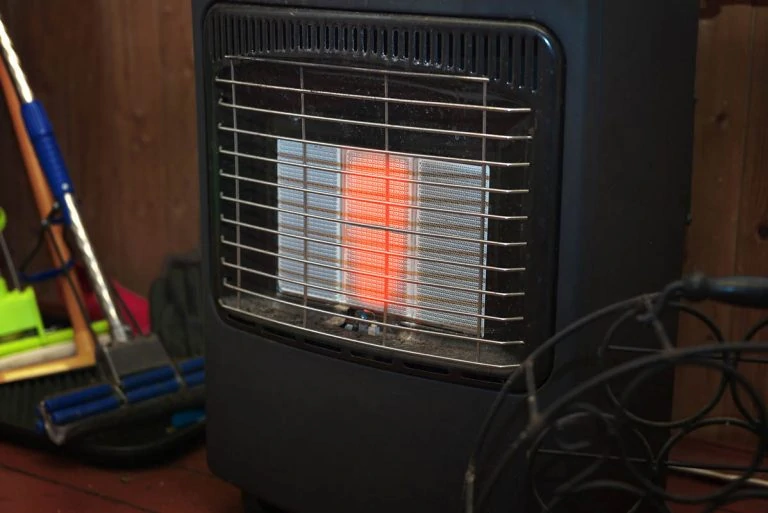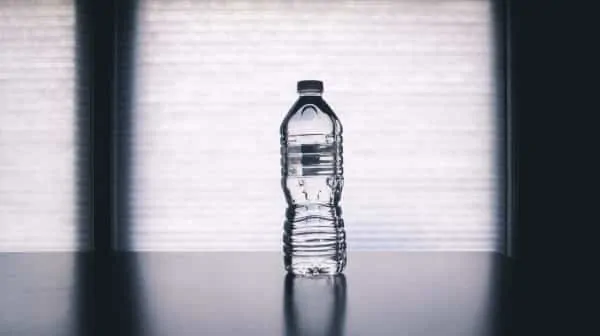In the United States, an average person uses 40 gallons of water per day to bathe and to do laundry.
This water doesn’t have to go down the drains. Greywater systems are an amazing way to conserve water in an energy-efficient manner.
For most people we would recommend the ISpring WGB32B 3-Stage Whole House Water Filtration System. There are plenty of other options though so here are the best greywater systems for your home.
Top 5 Greywater Systems Reviewed in 2024
1. Best Overall – ISpring WGB32B 3-Stage Whole House Water Filtration System
The ISpring WGB32B Whole-House-Water Filtration System is one of the best greywater systems for residential properties.
It is installed at the main water supply to treat the water that the entire household uses.
The unit is equipped with gradient three-stage filtration.
In the first stage, the high capacity polypropylene sediment helps filter down to 5 microns. The second and the third phase CTO carbon block filter usually use a high-quality coconut shell to achieve maximum filtration and filter life.
ISpring WGB32B is a system that removes sediment, rust, chlorine, pesticides, industrial solvents, and herbicides, VOCs, among other contaminants. With its 1-inch NPT inlet/ outlet, ISpring WGB32B has a minimum impact on water flow which is up to 15 GPM. The system also requires minimum maintenance.
This video from iSpring does a great job showing how to install it.
It is equipped with big blue 20inches x 4.5inches filter cartridges that reduce minimal pressure and extend filter life.
The water still retains the healthy minerals since it does not reduce the total dissolved solids.
2. Runner Up – Zoeller 105-0001 Laundry Pump Package Including M53 Sump Pump
If you don’t want to go for a complete system like the Ispring, the Zoeller 105–0001 is a good way to remove water for a single application such as laundry, air conditioning condensation or dehumidifre water removal.
Zoeller are known for producing top quality pumps and the Zoeller 105-0001 Laundry Pump Package is no exception. It has an automatic and float operated mechanical switch 115V/1 Ph and all drain pump series.
The unit is easy to assemble, and with no filters there’s nothing to clog so less maintenance for you.
It also features include 1-1/2″ NPT discharge, 9 ft. UL listed 3-wire cord and plug and 1550 RPM, 60 Hz on 50 series models. In addition, it has a non-clogging vortex impeller.
3. Best Budget – BURCAM 300514W 300514WH Automatic Laundry Tub Pump
BURCAM 300514W 300514WH Automatic Laundry Tub Pump is also one of the best greywater systems available today. Designed for a maximum lift of 10 feet, it enables it to handle the grey wastewater from washing machines, bar sinks as well as all other wastewater that does not contain solids.
It’s designed for permanent installation and is installed directly under the tub strainer. It is small in size and takes minimal floor space. It features an automatic switch that starts the motor when the water enters the pump body.
It has no trap or inlet piping, and no vent connection required.
4. Saniflo 008 SANIVITE Gray Heavy Duty Water Pump
Saniflo 008 SANIVITE Gray Heavy Duty Water Pump, White is a system that discharges 18-Gallon per minute and has a vertical pumping capcity of up to 16-Feet and 150-Feet horizontally. Developed by Saniflo, this system is ideal for heavy-duty applications and is fitted with multiple inlets for different installations.
Its size is small enough and can even fit inside a kitchen cabinet. Saniflo also has Saniflo 021 Saniswift Gray Water Pump which is for mid-range applications.
It is also a powerful and economical pump and comes with multiple inlets for different installations.
5. Little Giant 509081 WCR-9SP 115 Volt Wastewater Collection and Removal System
One of the best greywater systems is the Little Giant 509081 WCR-9SP 115 Volt Wastewater collection and removal system. It is ideal for handling both liquid and semi-liquid solid waste material with a spherical diameter of up to 2-inch.
With its larger capacity that reduces the pump cycles, it also helps extend it’s the pump life. Anti-flotation collar is one of its main features.
In addition, it has a 20-inch×30-inch polyethylene basin with ribs which adds its strength and a molded torque stops in the bottom of the bowl which helps locate the pump.
What is a Greywater System?
Greywater recycling system is a technology used to collect the water already used for other activities, clean and plumb it back for reuse.
Greywater sometimes called greywater includes water used for bathing, and washing clothes excluding sewage. Greywater is relatively clean and has not come into contact with human toilet wastes. Since sewage and kitchen water has relatively high organic loading, water from these sources is considered to be blackwater.
Greywater system treats the domestic wastewater and plumbs it back to reuse for other purposes like flushing the toilet, laundry, lawn and in landscape irrigation and more.
The water should be treated to very high standards to make it safe for reuse. You should ensure that it does not get contaminated with anything including cleaning and personal care products.
Greywater system is a system with numerous benefits. Besides reducing the wastewater entering the sewers, greywater can also help you reduce your water usage by around 50% and consequently cut your water bills by almost half.
Isn’t that cool? You may be wondering how greywater systems work, where you can get them from and which ones are the best for homes.
In this article, we will help you answer some of those questions.
Why should you install a greywater system?
Water conservation is very vital. Since 70% of the entire universe is covered with water, you may ask, why should we conserve water? Besides, it’s a natural resource, and it is readily available. Water is renewable, but not all of it is drinkable.
Well, fresh water is a limited resource. Only 2.5 percent of all water is freshwater.
A significant fraction of water in the water bodies is saline water. It thus must go through desalination to be fit for use. Desalination is a process that takes a lot of effort and resources.
Water can be scarce especially during the dry seasons. Thus, with the prevalent drought, water shortage is inevitable and water conservation has become necessary. Installing a greywater system for homes is one of the best ways to conserve water.
There are numerous ways to conserve water. For instance, Earthship homes capture rain and snowmelt, then filter it to make it potable. But here, we are going to focus on how installing the greywater system in homes can help reduce water usage and look at the seven best greywater systems for homes.
In addition, bottled water consumption has grown rapidly developing the following cons of drinking bottled water.
So, how do greywater systems work?
A greywater recycling system runs the greywater through a filtration process. The process helps reduce the existing scum and solid particles and sends it back for reuse.
The system treats or disinfects the water to different levels of purity. The process involves:
- Filtration or removal of solids such as lint and hair.
- Removal of unwanted chemicals including salts and nutrients and pathogens by use of either chemical treatment or micro-organisms.
- May also include disinfection by UV light or chlorination.
That way, it does not pose a threat to the environment. Different greywater systems vary in size and price. The greywater system cost ranges from affordable and straightforward to complicated and expensive mainly used for commercial purposes.
Let’s look at some of the best greywater systems residential purposed.
Greywater System Technologies
Here are the seven best greywater systems for homes:
1. Bucket for your greywater
One of the best greywater systems that you can freely use is a bucket system. It is a system that uses a siphon method to collect and distribute greywater before it goes down the drain into a sewer or septic system. It involves collecting water from the rinse cycle of a washing machine or water from the shower.
On the use of bucketed greywater, there are no restrictions or approvals necessary. It is suitable for use in a washing machine, toilet flushing, and irrigation of lawns, gardens and outdoor pot plants. Manual bucketing involves small volumes of greywater and is thus considered low risk.
It results in minimal soil contamination and runoff to the neighboring properties. Lifting heavy buckets regularly can result in health complications.
2. Greywater Diversion Device or GDD
The Greywater Diversion Device is a process that involves directing greywater from a waste pipe directly into the garden to be used in sub-surface irrigation. The water is used for irrigation only.
A GDD consists neither of storage nor treatment apart from filtering out of larger particles that would lead to system clogging over a period. It is a device that incorporates an overflow system or a valve that helps divert the greywater back into the sewer if this is closed.
3. Gravity Systems
The gravity system is yet another greywater water system for homes. It involves diverting the greywater directly from the feed pipe to a drip line or a sub-surface irrigation system in the garden.
It only works in instances where the inlet is a few meters above the outlet, and may still lack sufficient pressure to push the water through longer lengths of dripline effectively. It may, therefore, result in somewhat patchy watering.
4. Pumped Systems
Pumped systems involve the use of a small pump to push the greywater through the irrigation system. It is a system that typically combines four components including:
- Some filtration process which removes larger particles in the water as it flows into the system.
- A small surge tank helps cope with any sudden inflows of greywater for example when draining the washing machine and builds up sufficient volume for the pump to work.
- A pump which is used for distribution of the greywater directly into a sub-surface irrigation system.
The pumped systems are usually designed in two sizes including for a single fixture or a whole-of-house system. The single fixture is used in laundry and is generally mounted on the ground with a 50mm inlet or on a wall.
A Whole-of-House system, on the other hand, is installed underground with a 100mm pipe that feeds water from all showers, baths, and laundry.
Since greywater can smell, it best left to stay for more than 24 hours, a greywater septic tank used is not a storage tank.
Some of the largest systems only have around 600mm diameter. A greywater system cannot be used to build up a volume of water. Some diversion devices are used to pump out all the water when the surge tank is filled.
Some larger tanks hold the water until the tank is filled and then pump it out all at once. It is an approach that allows the pump to work more effectively and pumps a larger service area.
Thus, the plants grow better when they receive a larger amount of water less often since it boosts root growth.
5. Packaged systems are easy to install and use
A packaged system is one of the best greywater systems for homes. They are easy to install and use though they require electricity to work. They are self-contained and can be installed either indoors or outdoors.
6. Greywater Treatment System (GTS)
Another greywater system is a GTS which is more complicated than the Diversion System. Besides filtering out the lumpy bits, it improves the quality of greywater from showers, baths, and laundry to a level where it can be used for surface irrigation, in laundry or toilet.
You need a permit before installing the GTS system plus a regular servicing regime. The water from a GTS that has been disinfected is pumped into a second larger tank used for storage. It can be used for surface irrigation or a sub-surface system.
7. Greywater irrigation systems
You can also use greywater spray irrigation systems. Though not recommended because of increased risk of exposure to people, the risk can be minimized if the greywater is treated to a higher level.
The greywater should be distributed under pressure so that surface spray devices can maximize droplet sizes, plume and throw height. It helps minimize water loss that can occur via evaporation and thus maximize plant use of the greywater.
Conclusion
If you are looking for the best greywater systems for homes to install, then consider getting one from this list. These all can help you preserve water in an energy-efficient manner. We all know how important this is. These systems will help you save money and time.
If you’re looking for a complete household greywater solution we highly recommend the ISpring WGB32B 3-Stage Whole House Water Filtration System.
What do you think of these greywater systems for your home? Please let us know in the comments below. We’d love to hear from you.
















